Learning from the Past - Living Off-Grid - Edwardian Farm (Episode 3)
If you missed episode 1 and 2, you can find the write-ups here and here.
On to episode 3! For those of you just joining us, Edwardian Farm is a show put out by the BBC. It follows the story of a British historian (Ruth) and two archaeologists (Peter and Alex) as they live a year on an abandoned Edwardian-era farm. And they can only use the technology of the time. So, needless to say, this is a great show to learn a little bit about how to do things without all the modern conveniences that we are so used to. Episode 3 can be watched here.
Here are some of the lessons and facts that I found interesting in this episode:
Interesting Fact: Polluted Rivers

Every country seems to go through a phase where they completely destroy the environment for the sake of industrial progress. England is no exception. In this episode, Peter tells us about the extent of that pollution. Due to mining, some rivers were so polluted with copper that you could put a piece of metal in the river and when you came back to retrieve it, it would be plated in copper! Needless to say, the pollution also killed all the fish...
Another Interesting Fact: The Privy
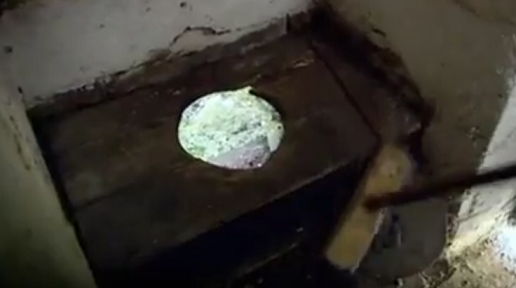
Even though many city dwellers were changing over to a water closet (what we think of as a pretty normal bathroom with a toilet), rural Edwardians still stuck to having a privy. Why? The low population density of the countryside allowed the people to still be able to deal with their own waste by composting - just as humans have for centuries. City people had to change because there were too many people and their waste was just too much for the little area to handle. That necessitated the flush toilet and a sewer system.
Lesson 1: White Washing
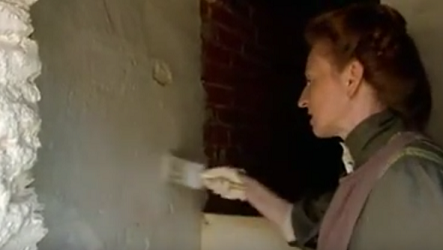
White washing was a common way to paint the house. It was made using the slaked lime that we talked about in the last episode (I told you it was useful!). Being slightly caustic, the white wash would actually help disinfect the surfaces that it was used on. Also, being white, it made an area brighter because white reflects the most light - pretty useful when you don't have electric lights all over the place. Pretty cool!
Lesson 2: Using Newspaper for Toilet Paper

Many people in the early part of the 20th century used newspaper for toilet paper - just as had been done for centuries. Newspaper is very easy to tear up into smaller pieces. It is also a perfect way to "recycle" the newspaper as opposed to throwing it away. The paper helps add some much needed carbon to the nitrogen-rich humanure that they were composting, too!
Lesson 3: Making Pitch

Pitch is made from the resin-rich roots of pine trees. It makes a perfect waterproof coating. You can melt down the pitch in a big pot and then apply it like paint.
Lesson 4: Making a Trout Hatchery
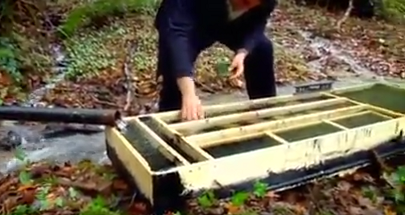
Because the rivers were so polluted, fish had to be raised artificially. In order to do this, Edwardians made small wooden hatcheries. These hatcheries had different compartments for the different stages of fish development. Once complete, the hatchery had to be placed near a clean source of flowing water, and that water had to be piped to the hatchery. If the water ever became stagnant, all of the fish would die due to lack of oxygen. It is actually really interesting how they built this, so check out the episode around the 27:00 mark to learn more.
Lesson 5: How to Extract Eggs from a Fish

In order to get eggs for the hatchery mentioned above, they had to be harvested from a live fish. And it is surprisingly easy to extract eggs from a live fish. If you find a gravid female, you can actually gently stroke her abdomen towards her vent and she will release her eggs. Each female trout can produce over 1000 eggs. How many of those actually will develop into a fish is another story entirely!
Lesson 6: Making a Hedge Row
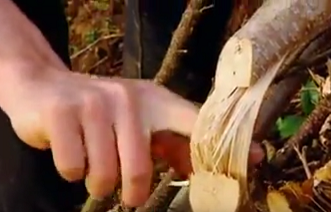
This is absolutely fascinating. I am sure that if you watch this part of the show, you, too, will be amazed. To make a traditional hedge row, you grow trees (like locust) for a few years. Then, once they have grown straight for a few years, you actually bend them over so that they are parallel to the ground. To bend them, they cut almost all the way through the plant. Seriously, they only leave a thread attached to the root (see pic), but the plant continues to grow just fine. It will eventually send up shoots perpendicular to the ground, and these will form the body of the hedge. And reports actually say that this increases the life of the plant. Amazing!
End of Episode 3
That's it for this episode. Pretty amazing things here. Probably most important to me was the formation of the hedgerow. I couldn't believe that those plants could still thrive after being cut almost completely in half.
What about you? Anything else you find amazing?

The hedgerow splicing is really interesting. The best part. Will have to go back and look at the other 2 posts. 🐓🐓
Right?!? In the other posts, you can learn how to make quick lime and slaked lime which are super useful. A great show, for sure!
I don't know how I feel about newspaper for toilet paper, we grow a special bush which has very soft and fuzzy leaves just for the moments when the t.p. runs out.
Is that mullein or some other plant?
We use Tibouchna urvilleana here on our farm. We are in tropical South America.
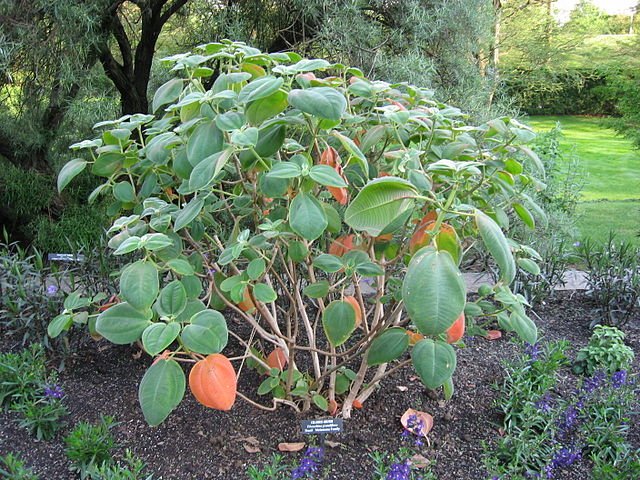
Awesome! I obviously have never heard of the plant before. I know of only two plants here in the United States with a nice and soft hairy texture often used as toilet paper. Always cool to know new plants. Thanks for sharing.
We use slaked lime to preserve our eggs, it works really well! I've been wanting to white wash the chicken coop with it as well. I'm going to give it a shot this spring. I love these series, I could watch them over and over. Wartime Farm is my favourite :)
I have heard about using lime to preserve eggs. Does it change the flavor or consistency of them at all? Does it limit their uses?
And I was surprised by how much I enjoyed Wartime Farm. I will probably do these write-ups on that series next.
I haven't noticed any difference, just rinse off the shell and cook as normal. I've never stored more than 4 months worth (yet) but I've been told they store well for a year this way.
I think I related to the Wartime Farm series most because its what my paternal great grandparents/grandparents would have been doing. Your write up on the series is great! I look forward to reading more of them!